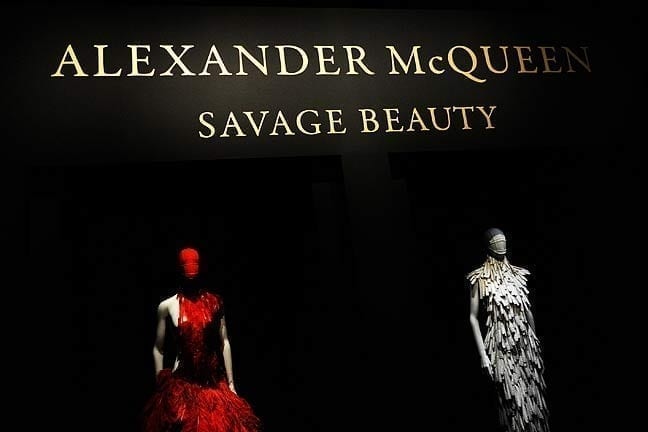An upfront admission: I’m biased about the following subject, but the fact remains that for many people, both those I know and hundreds of thousands I’ve never met, the best and most influential exhibit of the year was Alexander McQueen: Savage Beauty, presented by the Costume Institute at the Metropolitan Museum of Art.In total, 661,509 visitors viewed the exhibition during its run from May 4 to August 7 of this year, making it easily the most-viewed show since the Costume Institute became part of the Museum in 1946, and the eighth most-viewed show in the entire Museum’s history, ranking up there with the Mona Lisa show in 1966 and the Treasures of Tutankhamen in 1978. In an unprecedented move during the closing weekend, the Met even kept their doors open until midnight to try and accommodate the huge, ongoing demand of people wanting to see this exhibition.But outside the world of fashion and its devoted fans, Alexander McQueen was not a household name until recently. Why, with a designer that had occupied and even defined the more avant-garde end of fashion for most of his 19-year career, the sudden mainstream interest from visitors around the globe? What was it about the work of this particular artist that intrigued so many people, connecting them to a conversation about what our fashion says about culture, politics, and identity?
 |
Yes, his tragic exit in 2010—at the mere age of 40 years old—became international news, as was the triumphant resonance this past April of Kate Middleton’s royal wedding dress, designed by his longtime assistant Sarah Burton, who gracefully took up the heavy weight of being Creative Director of the McQueen brand after his passing. Those two things made headlines, but they’re not enough to generate sustained interest in what was one of the most sought-after tickets on the planet for its entire three month run.For me, the answer is very personal. He took us on a journey with his creations. He showed us beautiful things and disturbing things, he told stories about far-away times and places, he asked us to ask questions of ourselves, and perhaps most importantly, he allowed us to dream of transformation. The dream of transformation is a fundamental component of everyone’s personal story. It fuels our free will and our sense of possibility to create ourselves, and in whatever small way, to shape the world around us.




































